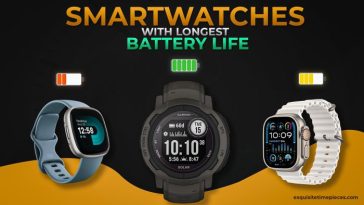The core functions of modern sports bands extend far beyond simple step counting, encompassing sophisticated technologies that contribute significantly to exercise and health management. This deep dive explores the essential features: heart rate monitoring, sleep tracking, calorie consumption estimation, and exercise mode recognition, revealing their principles, influencing factors, and practical benefits.
Heart Rate Monitoring: Principles and Influencing Factors
Most sports bands use photoplethysmography (PPG) technology for heart rate monitoring. This method involves shining light (usually green LEDs) onto the skin and measuring changes in light absorption caused by blood flow. The device detects these fluctuations to calculate heartbeats in real time. Accuracy tends to be high during rest and moderate exercise with error margins often within 5%, but factors such as motion artifacts, skin tone, sensor placement, and exercise intensity can influence readings. During intense workouts with rapid movements or high heart rates above 150 bpm, accuracy may decline due to signal distortion and delayed response times. Despite limitations, heart rate data is invaluable for gauging workout intensity, cardiovascular health, and recovery status, supporting personalized training and health monitoring.12
Sleep Monitoring: Sensor Fusion and Algorithmic Analysis
Sports bands track sleep by combining accelerometer data (to detect movement), heart rate variability, and sometimes skin temperature. Algorithms analyze these inputs to classify sleep into stages: deep sleep, light sleep, and rapid eye movement (REM) sleep. Deep sleep is identified by minimal movement and stable, slow heart rate patterns; light sleep shows more variability and occasional movements; REM sleep includes increased heart rate variability and irregular movements associated with dreaming. These detailed insights enable users to better understand sleep quality and make informed decisions to improve sleep habits, such as adjusting bedtime routines or managing stress. Advanced devices provide detailed reports on sleep duration and the proportion of each sleep stage, helping optimize recovery and overall health.3
Calorie Consumption: Data Fusion and Calculation Challenges
Calorie burn estimation by sports bands typically involves a combination of Basal Metabolic Rate (BMR) calculations — based on user input like age, weight, height, and gender — along with sensed heart rate and movement data. Using these metrics, proprietary algorithms estimate energy expenditure during workouts and daily activities. Despite popularity, studies reveal these calorie counts can be significantly inaccurate, often overestimating by 27% to 93%, particularly during activities like sitting or cycling. Variables such as resting metabolic rate variations and activity type affect precision. Therefore, while calorie data offers a rough guide to energy expenditure, it is better used alongside other fitness metrics to gauge exercise intensity and effectiveness rather than exact calorie counting for weight management.45
Exercise Mode Recognition: Technology and Training Value
Recognition of various exercise modes — like running, cycling, and swimming — relies on pattern analysis of sensor data including accelerometers, gyroscopes, and sometimes GPS. Motion characteristics such as cadence, stroke type, and movement intensity are matched against machine learning models trained to classify different activities. This enables tailored tracking that adjusts metrics (e.g., pace for running, stroke count for swimming) and offers specific feedback per sport. With this tailored data, users can monitor performance trends, optimize training load, and prevent overtraining. Real-time feedback during workouts helps maintain target heart rate zones and improves overall training efficiency.
In sum, the modern sports band integrates multiple sensor technologies and advanced algorithms to provide comprehensive insights into heart health, sleep quality, calorie use, and exercise monitoring. This integration helps users make smarter decisions for fitness and well-being, extending far beyond step counts into a holistic health management tool.
-
- https://pmc.ncbi.nlm.nih.gov/articles/PMC9952291/
- https://med.stanford.edu/news/all-news/2017/05/fitness-trackers-accurately-measure-heart-rate-but-not-calories-burned.html
- https://smremarker.com/3404/sports/whoop-bands-help-students-track-health-metrics/
- https://www.twopct.com/p/the-science-of-fitness-tracker-calorie
- https://www.calculator.net/calories-burned-calculator.html




 No products in the cart.
No products in the cart.